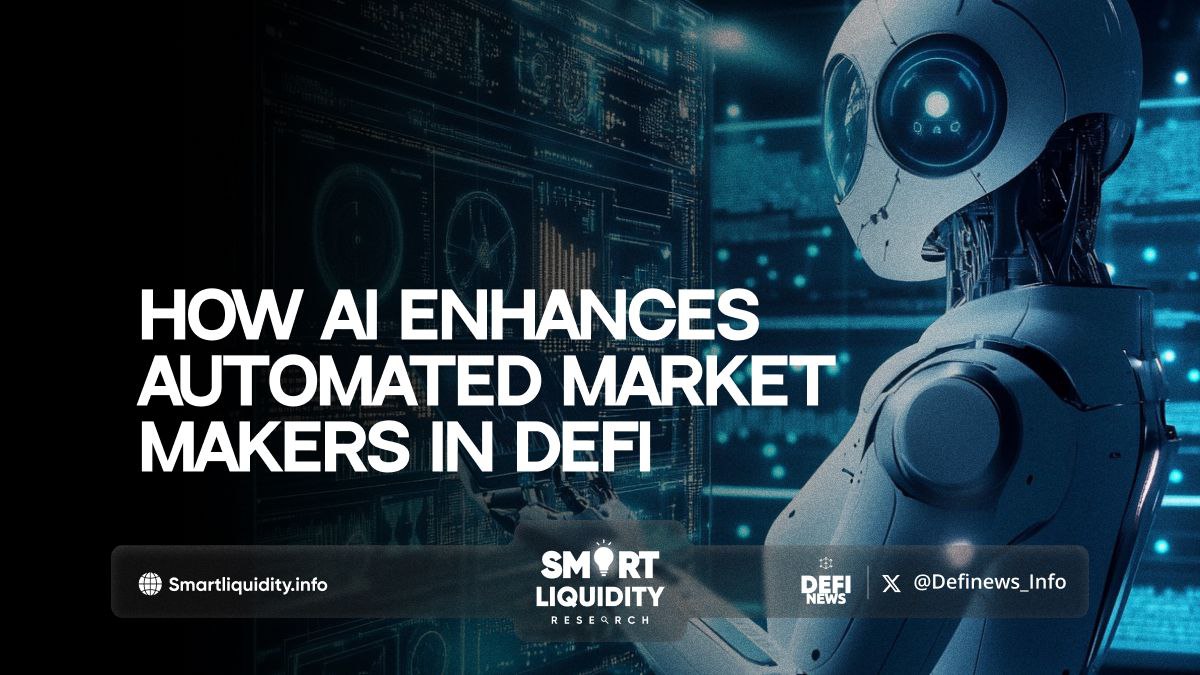How AI Enhances Automated Market Makers in DeFi


How AI Enhances Automated Market Makers in DeFi! In the rapidly evolving landscape of decentralized finance (DeFi), Automated Market Makers (AMMs) have emerged as critical innovations, enabling permissionless trading without the need for traditional intermediaries.
However, as with any technological advancement, the integration of artificial intelligence (AI) promises to take AMMs to the next level. This article explores how AI is revolutionizing the DeFi space by optimizing the efficiency and effectiveness of AMMs.
The Role of AMMs in DeFi
At the heart of DeFi protocols, AMMs allow users to trade assets on decentralized exchanges (DEXs) using liquidity pools rather than order books. These pools are composed of user-contributed assets, with prices determined algorithmically based on the ratio of assets in the pool. This system democratizes market-making, enabling anyone to participate.
AMMs like Uniswap, Curve, and Balancer are fundamental to DeFi, providing liquidity and enabling seamless trading. However, they are not without limitations. Impermanent loss, price slippage, and inefficiencies in liquidity allocation are just a few of the challenges facing current AMM models.
AI’s Game-Changing Potential for AMMs
AI has the potential to address some of these challenges by introducing enhanced decision-making, predictive modeling, and real-time optimization.
Here’s how AI is shaping the future of AMMs:
- Predictive Analytics for Smarter Liquidity Management
AI-driven predictive analytics can help AMMs optimize liquidity pools by forecasting market trends and asset demand. By anticipating which assets are likely to experience high trading volumes, AI can suggest rebalancing liquidity pools to ensure they have sufficient liquidity for upcoming trades. This reduces slippage and ensures better price stability. - Minimizing Impermanent Loss
One of the most significant drawbacks of providing liquidity to AMMs is impermanent loss, which occurs when the price of assets in a liquidity pool fluctuates significantly. AI can mitigate impermanent loss by using machine learning algorithms to predict market movements and adjust the asset ratios in pools dynamically. This ensures that liquidity providers are not disproportionately exposed to volatile assets. - Enhanced Pricing Models
AI can refine the pricing algorithms used by AMMs. Current models, such as constant product or constant sum algorithms, are relatively basic and often lead to price discrepancies compared to centralized exchanges. AI can improve price discovery by incorporating real-time data and market sentiment analysis, ensuring that the prices quoted by AMMs are more accurate and reflective of true market conditions. - Fraud Detection and Risk Management
AI-powered systems can enhance security in AMM protocols by detecting suspicious trading activities or potential exploits in real-time. By identifying abnormal patterns or behaviors, AI can safeguard against market manipulation, flash loan attacks, and other forms of fraud that plague DeFi platforms. This fosters trust among users, which is critical for the continued growth of the DeFi ecosystem. - Automated Portfolio Rebalancing
For liquidity providers, AI can offer tools for automated portfolio rebalancing. By continuously analyzing market data and adjusting positions based on asset performance, AI helps liquidity providers maintain optimal exposure to various assets. This ensures that they can maximize returns while minimizing risk.
The Future of AI-Enhanced AMMs
As the DeFi space matures, the incorporation of AI into AMMs will likely become more widespread. This integration will result in more efficient markets, reduced risks for liquidity providers, and overall improved user experiences. However, it’s important to acknowledge the challenges that come with adopting AI, including data privacy concerns, algorithmic biases, and the need for robust infrastructure.
Nevertheless, the fusion of AI with decentralized finance represents an exciting frontier. As these technologies evolve, they have the potential to redefine how we interact with financial systems, making them more transparent, efficient, and accessible to all.
In Summary
AI is poised to revolutionize the way AMMs operate within the DeFi ecosystem. From reducing impermanent loss to enhancing liquidity management and security, the benefits of AI-driven solutions are clear. As DeFi platforms integrate AI, AMMs are expected to become smarter and more efficient, effectively managing a growing user base.




